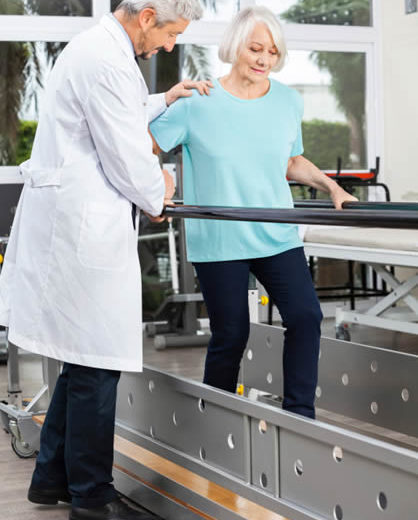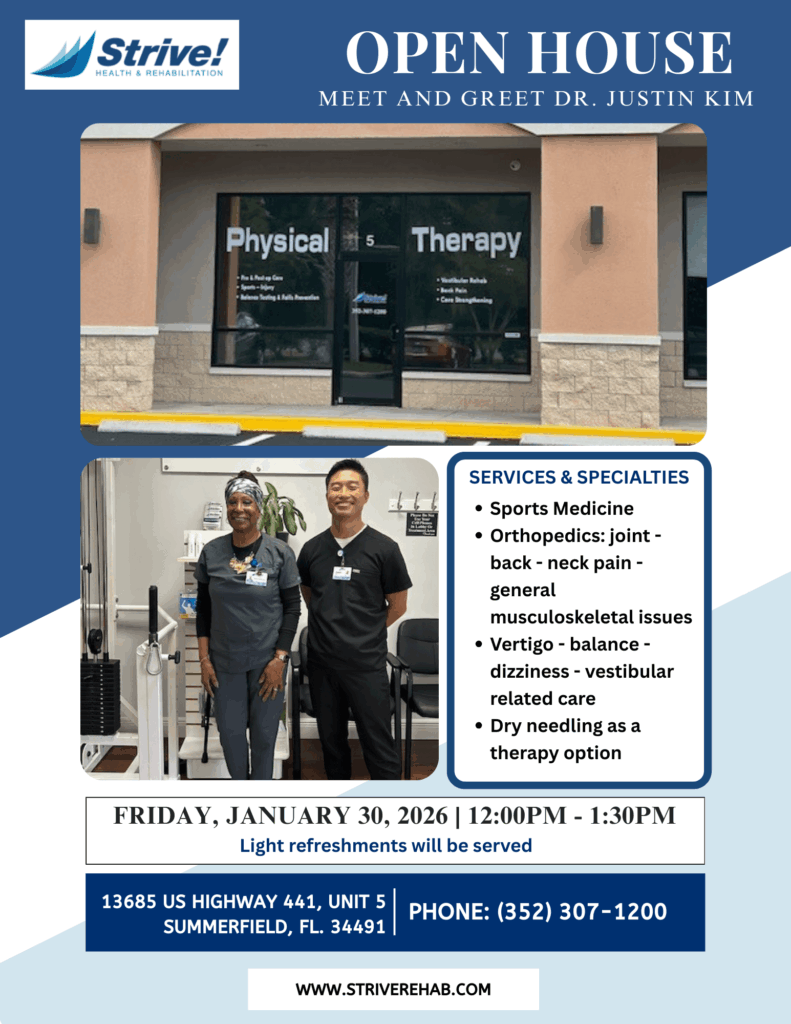Walking is a fundamental activity that enables us to navigate through life while also giving us the freedom and independence to continue our daily lives. However various factors such as age-related issues, injuries, or neurological conditions can affect your ability to walk. In this blog post, we will explore the importance of gait training in improving mobility and restoring confidence in walking. We will delve into the benefits of gait training, the techniques involved, and how it can positively impact individuals with different needs.
- What is Gait Training:
Gait training is a type of physical therapy that can help you with standing and walking. Its goal is to help improve strength and balance in your lower body in order to walk normally and safely. Your gait cycle includes stepping, landing on one foot, rolling over that foot, and lifting your foot off the ground again. According to verywellhealth.com Common types of gait abnormalities that may require gait training include:
- Trendelenburg gait: an abnormal gait resulting from a defective hip abductor mechanism. The primary musculature involved is the gluteal musculature, including the gluteus medius and gluteus minimus muscles. The weakness of these muscles causes drooping of the pelvis to the contralateral side while walking.
- High steppage gait: A high steppage gait pattern is a way of walking that occurs when you have a foot drop. A foot drop is caused by weakness or paralysis in the anterior tibialis muscle of your lower leg. The anterior tibialis muscle usually helps you flex your toes when you walk.
- Spastic gait: A spastic gait causes you to walk with one stiff leg. When you lift that leg to walk, it either drags or swings around in a semicircular motion (circumduction). This type of gait is common among people diagnosed with cerebral palsy, multiple sclerosis, or hemiplegia.
- Antalgic gait (gait abnormalities due to pain): an abnormal pattern of walking secondary to pain that ultimately causes a limp, whereby the stance phase is shortened relative to the swing phase
- Benefits of Gait Training:
Gait training helps improve the risks of falling and stumbling, it also aims to improve your stability and walking. Gait training can help with
- Strengthing muscles and joints
- Improve balance and posture
- Build your endurance
- Develop your muscle memory
- Retain your legs for repetitive motion
- Lower risks of falls and increase mobility.
A majority of gait exercises are meant to help build strength in your muscles and joints. Some of these exercises include: lifting your leg, sitting down, standing up, walking on a treadmill, and stepping over objects.
III. Techniques and Approaches to Gait Training:
With gait training, there are different techniques and ways of approaching. To start off, Therapeutic exercises help with gait training. Therapeutic exercise is when movement is prescribed to correct impairments, restore muscular and skeletal function, and/or maintain a state of well-being. Some therapeutic exercises include:
- Body mechanic training
- Aerobic and endurance conditioning and reconditioning
- Agility training
- Range of motion exercises and soft tissue stretching
- Strength, power, and endurance exercises.
Another technique or approach would be Assistive devices. Assistive devices, such as canes, walkers, or orthotics, may be utilized to improve stability and support during walking. A physical therapist assesses the need for a prescribed assistive device based on need and gait abnormality.
In conclusion:
Gait training is a valuable intervention that can significantly improve mobility, independence, and overall quality of life. By addressing gait abnormalities through tailored exercises, techniques, and assistive devices, physical therapists empower individuals to regain confidence and efficiency in walking.
If you or a loved one are experiencing difficulties with walking, consulting with a physical therapist can help assess your specific needs and develop a personalized gait training program to enhance mobility and restore your freedom of movement.
References:
- Bella Vista Health Center. (2022, August 3). Essential Gait training exercises for elderly: Bella Vista san diego, CA. Bella Vista Health Center. https://www.bellavistahealth.com/blog/gait-training-exercises-for-elderly
- The benefits of gait training. The Benefits of Gait Training. (n.d.). https://www.fyzical.com/lakewoodranch/blog/The-Benefits-of-Gait-Training
- Brett Sears, P. (2022, March 14). Problems with gait or walking? your PT can help. Verywell Health.
- Brett Sears, P. (2023, May 31). What is a high steppage gait pattern and how can pt help?. Verywell Health. https://www.verywellhealth.com/high-steppage-gait-pattern-2696111#:~:text=A%20high%20steppage%20gait%20pattern%20is%20a%20way%20of%20walking,toes%20up%20when%20you%20walk.
- https://www.verywellhealth.com/gait-training-in-physical-therapy-5069884
- Gabbey, A. E. (2017, March 21). Gait training | definition and patient education. Healthline. https://www.healthline.com/health/gait-training
- National Center for Biotechnology Information. (n.d.-a). https://www.ncbi.nlm.nih.gov/books/NBK559243/
- professional, C. C. medical. (n.d.). What is my gait and do I have a gait abnormality?. Cleveland Clinic. https://my.clevelandclinic.org/health/symptoms/21092-gait-disorders#:~:text=Spastic%20gait%20(hemiplegic%20gait)%3A,palsy%2C%20multiple%20sclerosis%20or%20hemiplegia
- Solo-Step. (2022, October 13). The importance of gait training – solo-step. Solo. https://solostep.com/the-importance-of-gait-training/
- Therapeutic exercise. Physiopedia. (n.d.-b). https://www.physio-pedia.com/Therapeutic_Exercise#cite_note-:0-1
- Trendelenburg gait – statpearls – NCBI bookshelf. (n.d.-b). https://www.ncbi.nlm.nih.gov/books/NBK541094/



